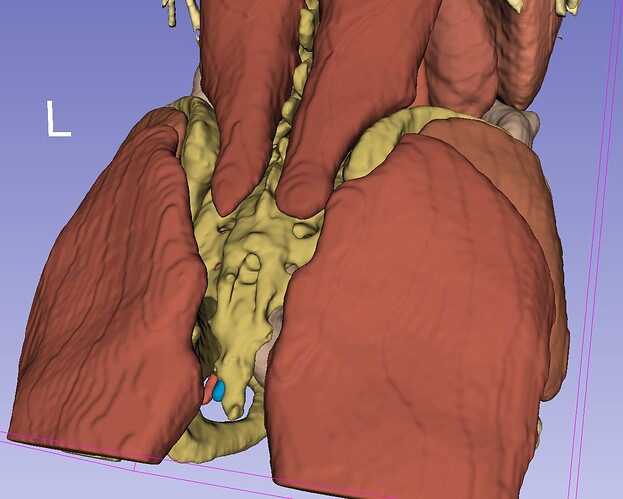Yesterday I created a new module for generating a full-color RGBA volume, by combining a segmentation and a scalar volume using some smart filtering and masking. Combined with a fix in the VTK RGBA volume renderer, I find that it creates beautiful renderings that hasn’t been possible before; and it surpasses many “cinematic renderings” in the coloring aspect.
For example, TotalSegmentator segmentation results on the CTLiver sample data set are rendered like this:
Just for reference, surface rendering provides much less texture details - see below. However, what works well for surface rendering (and is not available for volume rendering) is screen-space ambient occlusion (making things that are behind other objects appear darker).
I think this is the only thing that would be necessary to make stunning volume renderings in VTK. Screen-space ambient occlusion is also very fast, so it could be usable not only for rendering videos, but for real-time rendering for surgical guidance, virtual reality, etc.
I’ve tried the VTK’s scattering shading models, but they are slow, the results look very artificial and low-quality (almost as if there was no shading). It is not just my settings - all the showcased renderings in the Kitware blog all look pretty bad to me. To me, it looks like some interesting effects applied on volume rendering, which make the rendering appear less realistic than basic volume rendering. Scattering also hangs on my laptop and hangs or crashes on my desktop (with RTX3060) after a short while when I’m trying to adjust parameters. Also, it does not seem to work at all for RGBA volumes.
@LucasGandel Are there any better examples of VTK’s scattering shader where the resulting rendering look more realistic? Is there a chance that screen-space ambient occlusion will be made available for volume rendering? (the Z buffer generated by the volume renderer could be used for the occlusion computation)




